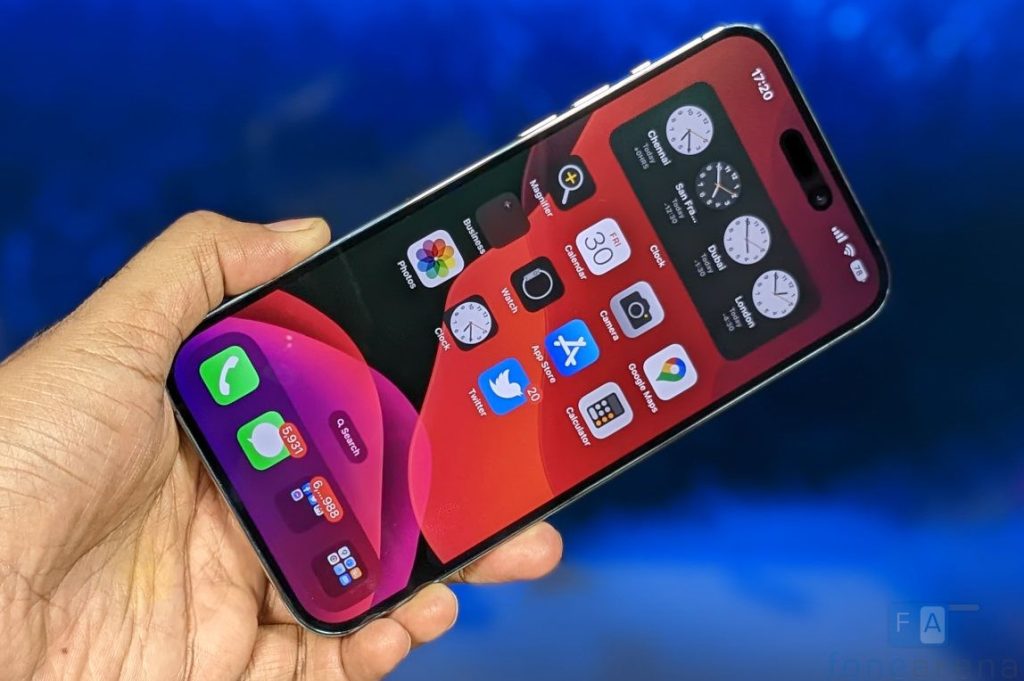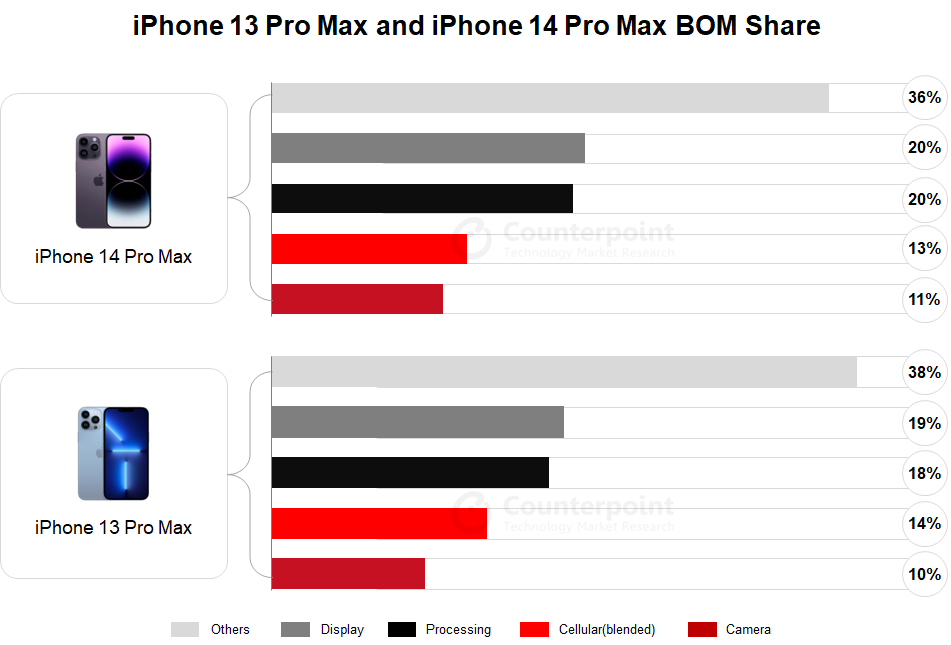
The cost for Apple to manufacture a 128GB iPhone 14 Pro Max with mmWave technology is estimated to be $474, as reported by Counterpoint Research’s Bill of Materials analysis,
The blended bill of materials (BoM) cost for the iPhone 14 Pro Max
According to Counterpoint Research, the Bill of Materials cost for the sub-6GHz model of the iPhone 14 Pro Max is $454. When taking into account a 44% mix of mmWave models by the end of 2022, the average materials cost for the iPhone 14 Pro Max comes to around $464, which represents a 3.7% increase compared to the iPhone 13 Pro Max.

A16 Bionic Processor: The latest 4nm process-powered processor from Apple contains 16 billion transistors, 6.7% more than the previous generation, leading to improved CPU, GPU, neural engine, and camera ISP performance. The application processor alone adds $11 to the Bill of Materials cost, accounting for 20% of the total.
Improved Display: The iPhone 14 Pro Max has a brighter HDR and outdoor display and an always-on feature for easier viewing. This has increased the cost of display components, which are supplied by Samsung.
Upgraded Main Camera: The iPhone 14 Pro Max features a 48MP main camera with a larger quad-pixel sensor and a second-gen sensor-shift stabilize. Sony supplies the image sensor, while Sunny Optical, Largan Digital, and GSEO provide the 7P lens and LG Innotek the module. The front camera now has autofocus and a 6P lens, supplied by GSEO and Sunny Optical. These upgrades increased camera costs by $6.30.
Lower Cellular Costs: The blended cost of the iPhone 14 Pro Max’s cellular group decreased to 13% due to falling component prices with the rise of 5G technology. Components are supplied by Qualcomm, Qorvo, Skyworks, and Broadcom.
Supply Diversification: Apple continues to diversify its suppliers, with KIOXIA and SanDisk supplying NAND flash, SK hynix, Samsung, and Micron supplying LPDDR5, NXP and Broadcom supplying wireless connections, display and touch solutions, and Cirrus Logic, Goertek, Knowles, and AAC dominating audio design. TI and ST Micro are major suppliers of power and battery management ICs.
Increased Self-Designed Components: Apple’s self-designed components, including the A16 Bionic processor, PMIC, audio, connectivity, and touch control, account for a larger share of the overall BoM cost of the iPhone 14 Pro Max, estimated at 22%.
The above-mentioned main categories that have seen an increase in cost are the application processor, display, and camera, which also now account for a larger portion of the overall Bill of Materials.
